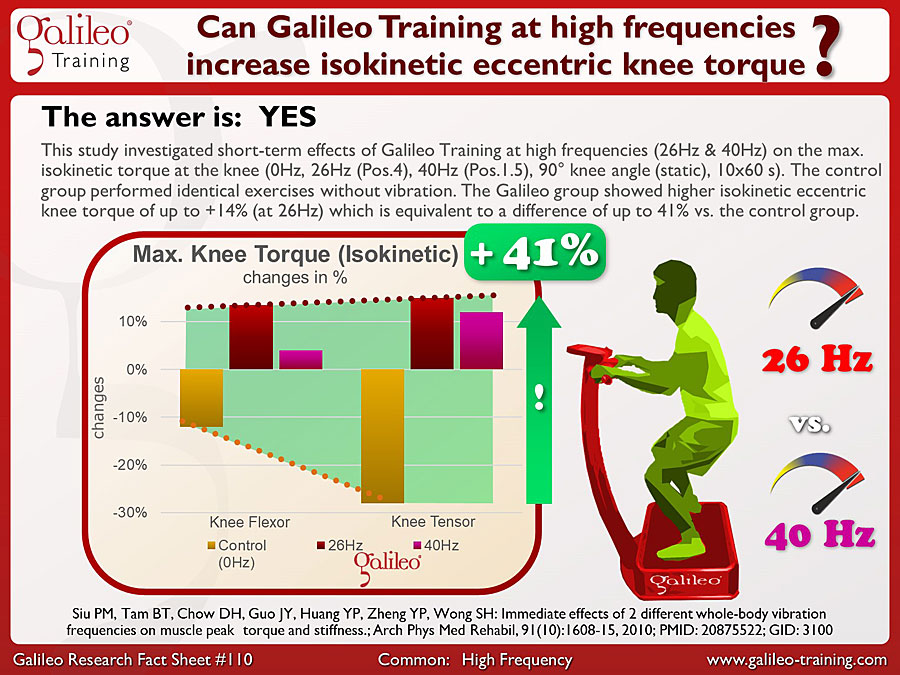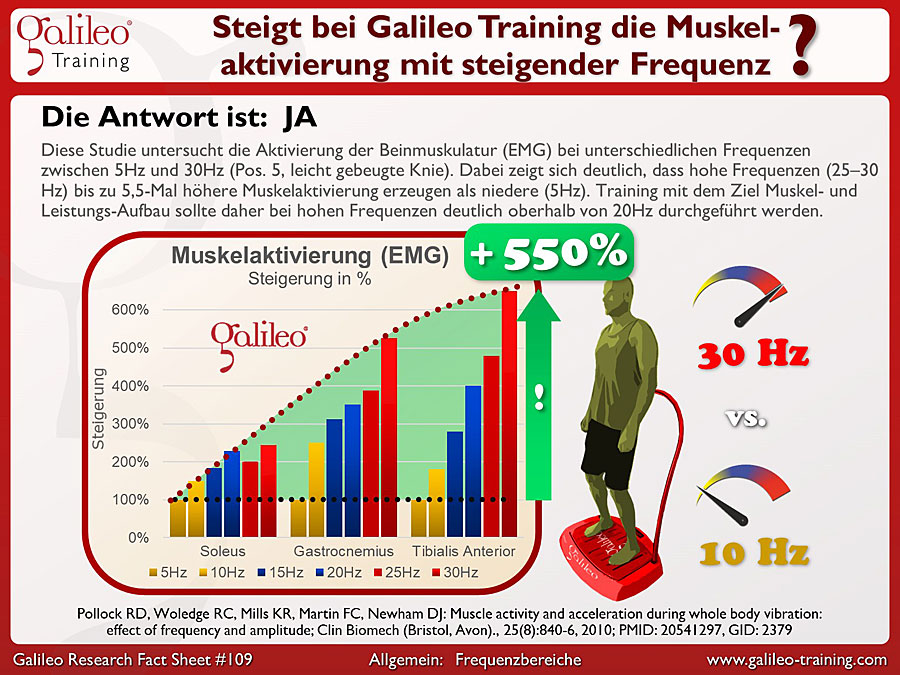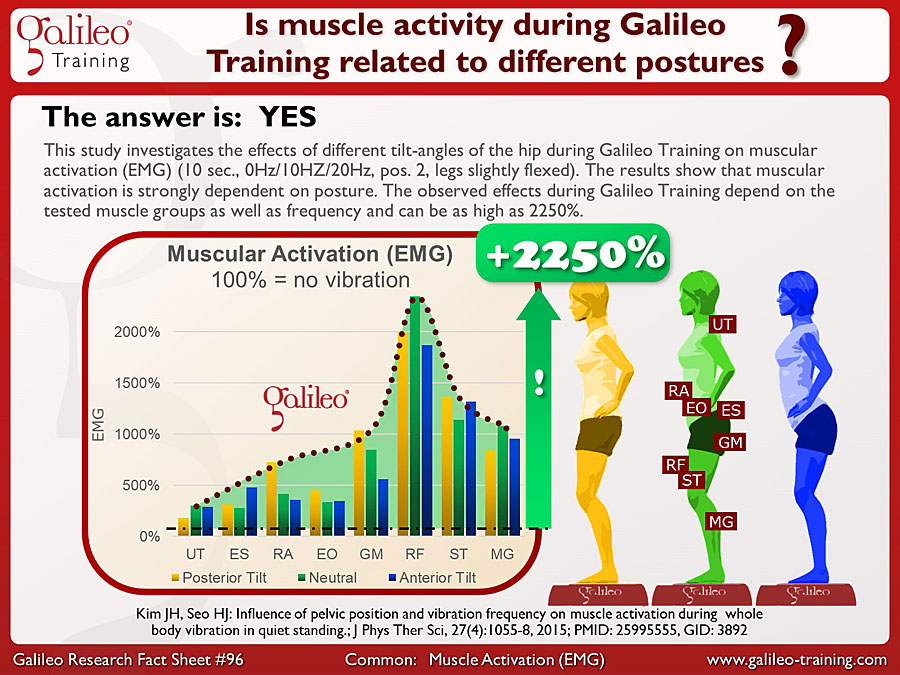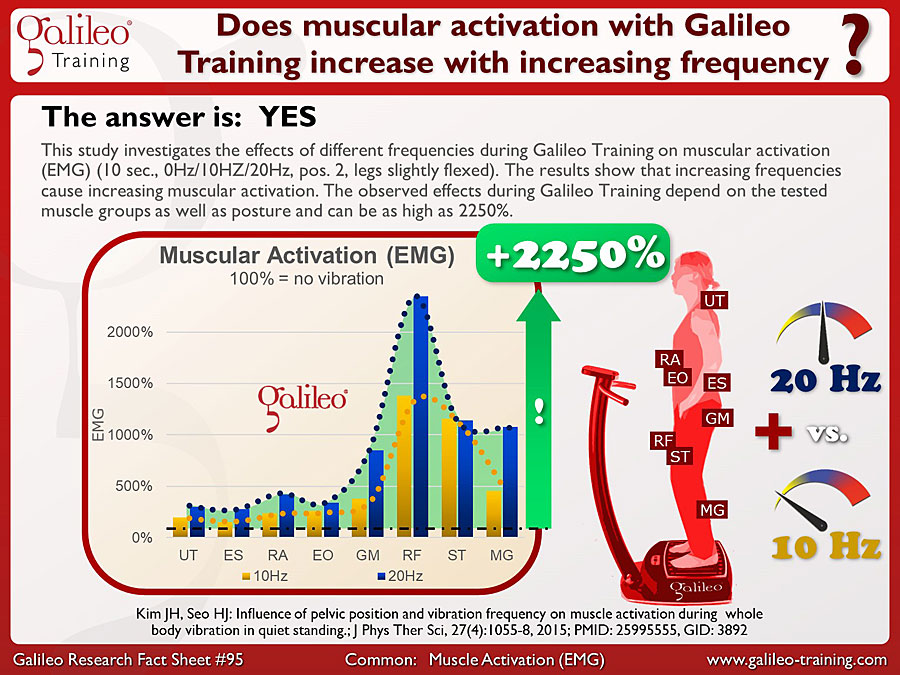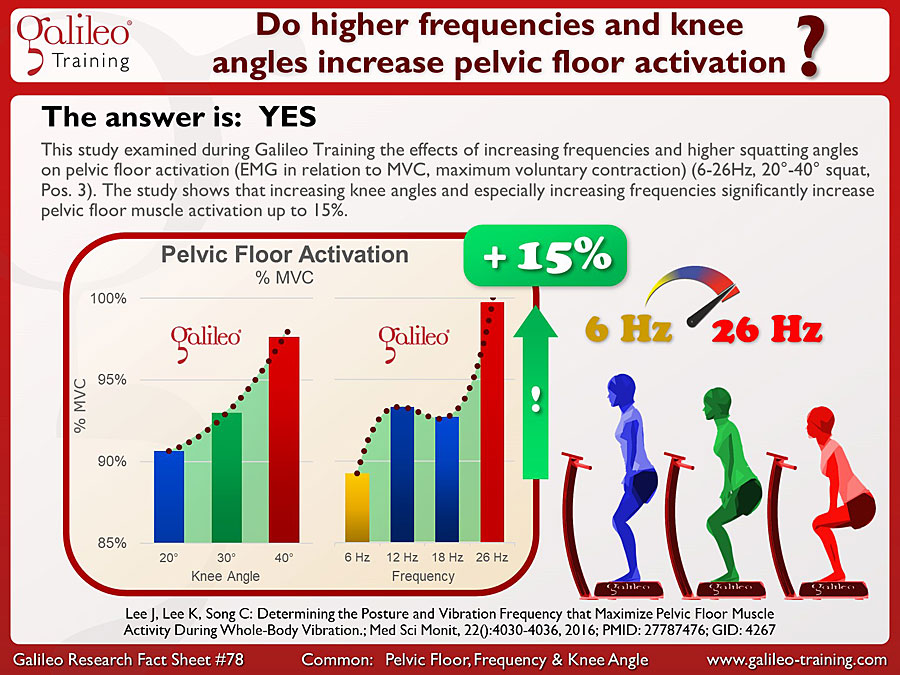Tag Archives: FrequencyRanges
This study tested muscle activation (EMG) of different muscles of the leg at different amplitudes and frequen-cies (5..30Hz) (pos. 2.5 vs. pos. 5, slightly flexed legs). It showed that higher amplitudes (pos. 5) can increase muscle activation by up to 2.75 times compared to low amplitudes (pos. 2.5). Therefore the amplitude is an easy way to adjust the intensity of Galileo Training. (On Galileo the position is equivalent to amplitude in mm)...
Galileo Research Facts No. 110: Can Galileo Training at high frequencies increase isokinetic eccentric knee torque?
This study investigated short-term effects of Galileo Training at high frequencies (26Hz & 40Hz) on the max. isokinetic torque at the knee (0Hz, 26Hz (Pos.4), 40Hz (Pos.1.5), 90° knee angle (static), 10x60 s). The control group performed identical exercises without vibration. The Galileo group showed higher isokinetic eccentric knee torque of up to +14% (at 26Hz) which is equivalent to a difference of up to 41% vs. the control group...
Galileo Research Facts No. 109: Can high frequencies increase muscle activation during Galileo Training?
This study tested muscle activation (EMG) of different muscles of the leg at different frequencies between 5 and 30Hz (pos. 5, slightly flexed legs). It showed that high frequencies (25-30Hz) can increase muscle activation by up to 5.5 times compared to low frequencies at 5Hz. Therefore Galileo Training targeting muscle hypertrophy and muscle power should be using high frequencies above 20 Hz to increase muscle activation...
Galileo Research Facts No. 101: Does Galileo Training trigger a stretch-reflex with each upwards movement of the platform?
This study proved that Galileo Training triggers a stretch reflex with each upwards movement of the platform. It also proved that the EMG signal corresponding to the vibration frequency is not a motion artifact but an actual activation of the corresponding muscle. The measured latency is therefore not dependent on the vibration frequency but on the individual and is identical with the latency caused by one single tilt movement...
Galileo Research Facts No. 96: Is muscle activity during Galileo Training related to different postures?
This study investigates the effects of different tilt-angles of the hip during Galileo Training on muscular activation (EMG) (10 sec., 0Hz/10HZ/20Hz, pos. 2, legs slightly flexed). The results show that muscular activation is strongly dependent on posture. The observed effects during Galileo Training depend on the tested muscle groups as well as frequency and can be as high as 2250%...
Galileo Research Facts No. 95: Does muscular activation with Galileo Training increase with increasing frequency?
This study investigates the effects of different frequencies during Galileo Training on muscular activation (EMG) (10 sec., 0Hz/10HZ/20Hz, pos. 2, legs slightly flexed). The results show that increasing frequencies cause increasing muscular activation. The observed effects during Galileo Training depend on the tested muscle groups as well as posture and can be as high as 2250%...
Galileo Research Facts No. 78: Do higher frequencies and knee angles increase pelvic floor activation?
This study examined during Galileo Training the effects of increasing frequencies and higher squatting angles on pelvic floor activation (EMG in relation to MVC, maximum voluntary contraction) (6-26Hz, 20°-40° squat, Pos. 3). The study shows that increasing knee angles and especially increasing frequencies significantly increase pelvic floor muscle activation up to 15%...
Galileo Research Facts No. 59: Are high frequencies for stretching more effective and lasting than mid frequencies?
This study examined for Galileo Training the effects of different frequencies on increase of flexibility (6 min. pos. 3, 20° bent knees, 15, 20, 30Hz). The control group performed the same exercises without vibration. ´The effects of Galileo Training on flexibility where significantly higher at mid frequencies (15 & 20Hz) compared do high frequencies (30 Hz). The differences where even higher 15 Minutes after the exercise...

